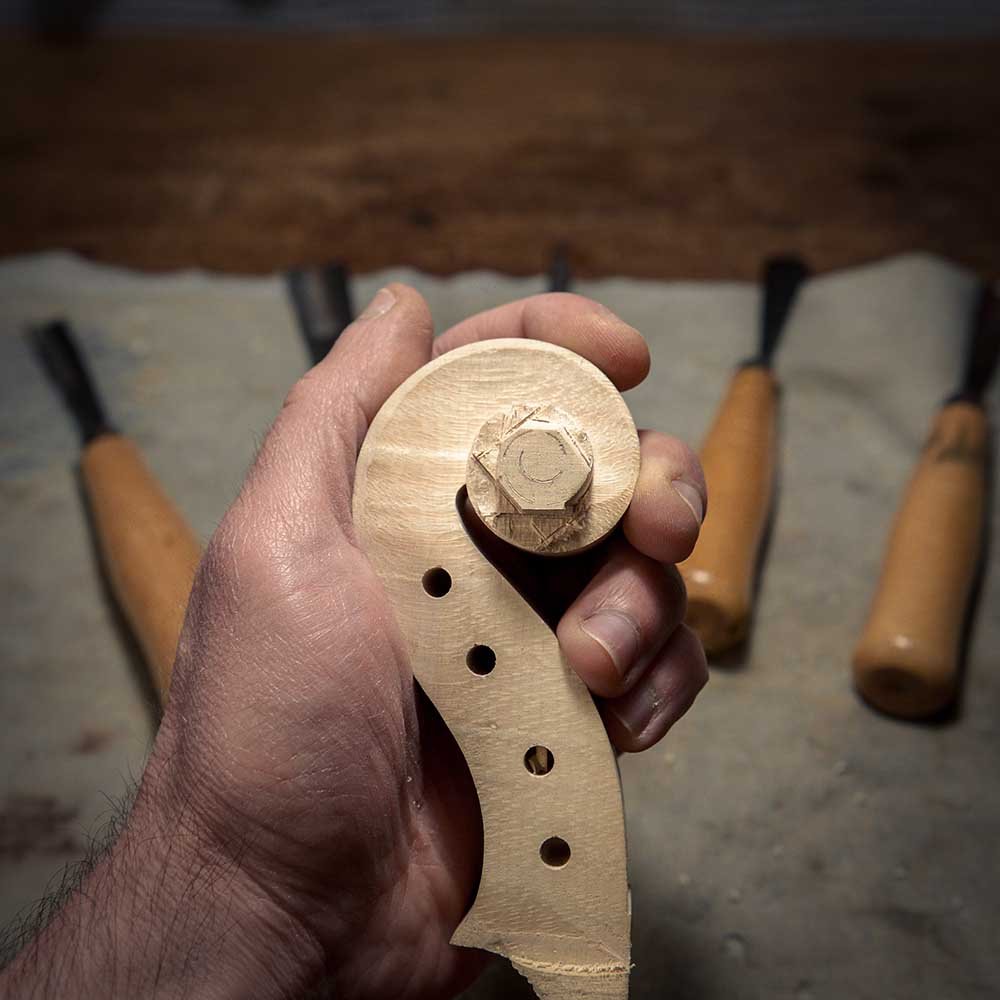Techniques
The Cremonese Tradition
Studying in Cremona means learning the Cremonese method of violin making, which is still the best!
All the various steps needed to make a good sounding instrument are being taught respecting the old master’s techniques, with some minor innovations and better tools!
All my instruments are handmade, from start to finish, keeping in mind the excellence of the 17th and 18th century makers. Most of the music written later is based on those instruments, and thus all my efforts are focused on trying to serve that music with the best sound.
How can I improve that?
Respecting the tradition doesn’t mean that it can’t be changed. For example, the positioning pins leave a tiny mark, visible especially on the back plate. By not using them, realigning the plates with the rib garland is more time consuming, but I think the result it’s worth it!
Purflings can also be installed without the joint, as in the picture. It takes time and it’s riskier than the old method, but again, a purfling with no joint is better!
We are also lucky enough to have tools that are way better than centuries ago, so it’s way easier to make a harmonic outline with modern files, which seem shaped to do exactly that job.
A new way of varnishing?
It’s a question because we’ll never know exactly what the old masters used to do at their time.
In this decade I spent a lot of time improving my varnish and wood preparation, and at a certain point I thought: “why ribs can’t be tinted before they are glued to the blocks?
This way I’d avoid ghosting due to the glue entering the pores” and so I did! It’s a small innovation, but it avoids a lot of useless retouching.
A new shape for the blocks
The idea behind this shape is that the less corners are present inside a room, the more reflections the soundwave will have.
Giving the blocks this shape increases the number of internal reflections, thus avoiding sound loss due to the corners that form with the traditional block shape.
I’ve made a good number of instruments with this internal block design, and yes, there is a difference!
Modern sound research
While physics teach us that the the less mass we have to move, the less force we have to apply to produce that movement, experience says that the top and back plate have to be tuned to certain frequencies, so that they result in an acoustic resonator.
The ideal relation between these frequencies seems to resemble the musical chords, when they are not tuned to the same frequencies, and I know when to stop removing wood because a clear, ringing note is easily produced by tapping the plate.
The goal is a balance of various elements, they are weight, eigenmode frequency, quality of the note and thickness of the plate. If a plate is too thin it may sound wonderfully, but it may lose its strenght soon, and that would be detrimental for sound.





